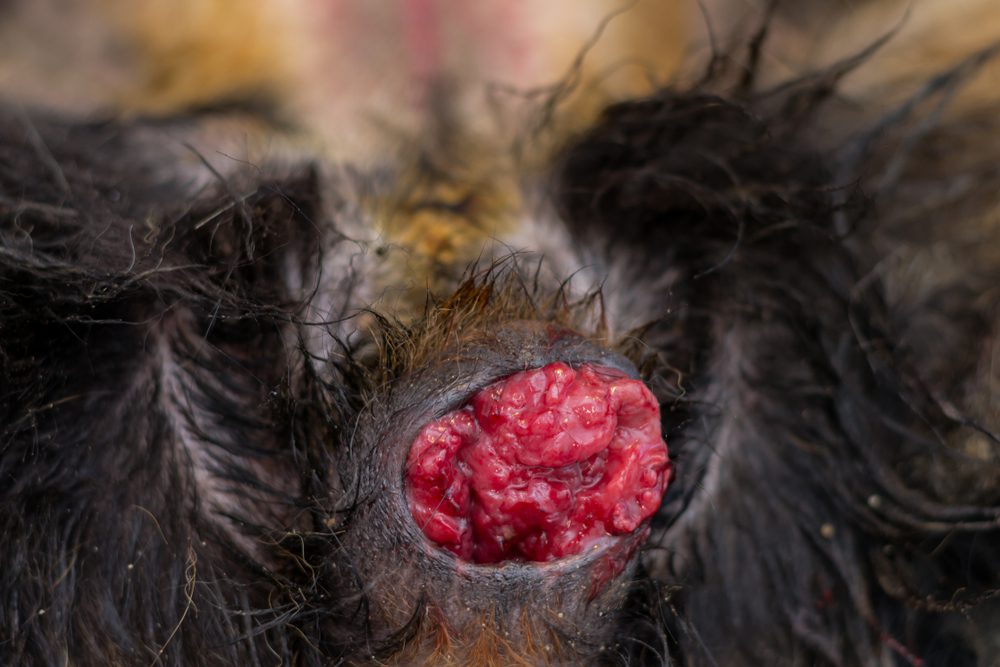The idea of an infectious cancer might sound like the stuff of post-apocalyptic video games, yet a number of transmissible tumors have been documented in real life. Fortunately, none have ever been reported in humans, although a rapidly-spreading facial tumor has driven the Tasmanian devil to the brink of extinction.
The most widely-studied contagious cancer occurs in dogs and is known as canine transmissible venereal tumor (CTVT). Affecting the outside of the genitalia of both sexes, CTVT was initially confirmed in 1876 when a researcher proved the infectiousness of the cancer by rubbing tumor cells from one dog onto the genitals of another.
Exactly how cancerous cells are able to jump from one individual to another is not entirely understood, although CTVT is usually transmitted during mating and can be passed between multiple canid species, including dogs, wolves, foxes and coyotes. However, previous attempts to infect cats and mice have proved unsuccessful, suggesting that the tumor can’t be transmitted to unrelated species.
Appearing as a ghastly red growth oozing a hideous discharge, the tumors are easy to spot and usually recede quickly when treated with chemotherapy. For this reason, survival rates are high and the disease has been all but eradicated in many Western countries, persisting mainly in stray and wild dogs in less developed nations.

Canine transmissible venereal tumor (CTVT) looks gnarly but tends to respond well to treatment. Image credit: Todorean-Gabriel/Shutterstock.com
Elsewhere, Tasmanian devil facial tumor disease (DFTD) was first reported in 1996 and has already wiped out up to 90 percent of the devil population in some parts of the island. Unlike CTVT, this transmissible tumor is nearly always fatal, appearing on the face before metastasizing to internal organs.
It’s thought that DFTD is usually passed on when animals bite each other during mating or feeding. Despite consisting of foreign cells, the tumor usually goes unrecognized by the devils’ immune system and can often grow large enough to cause death by asphyxiation.
Like CTVT, DFTD involves the direct transfer of cancer cells from one individual to another, and can therefore be considered a parasitic cancer clone. And while confirmed examples of transmissible tumors in other species are rare, there have been some reports of cancers spreading through populations of laboratory hamsters.
So far, this communicable rodent cancer has not been studied in detail, although it is thought that the disease may be at least partially passed on via cannibalism. And while no other transmissible tumors are known to occur in mammals, a mysterious contagious cancer has been seen in soft shell clams, of all species.
Of the four documented examples of transmissible tumors, this catching clam cancer is by far the most perplexing as the mollusks don’t come into contact with one another at any point in their life cycle. To reproduce, the delicious bottom-dwellers simply release their junk into the water, so how cancerous cells are able to jump from clam to clam remains a mystery.
For now, humans seem to be safe from transmissible tumors. But if that were ever to change, we’d be done for.
Source Link: Transmissible Tumors: The Cancers That Can Spread Through Contact